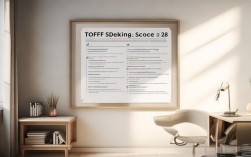在雅思口语备考中,"painting"是一个高频且实用的主题,既能考察考生对艺术类词汇的掌握,也能检验描述经历、表达观点的能力,掌握相关语料不仅能帮助考生在Part 1中轻松应对日常话题,更能在Part 2和Part 3中展现丰富的语言表达和逻辑思维,以下从核心词汇、高频话题、实用句型及备考建议四个维度,系统梳理雅思口语中的painting语料库。

核心词汇积累
准确使用与绘画相关的词汇是回答的基础,需从画种、技法、情感和评价四个维度分类记忆:
画种与媒介
- 画种:oil painting(油画)、watercolor(水彩画)、ink wash painting(水墨画)、portrait(肖像画)、landscape(风景画)、still life(静物画)、abstract painting(抽象画)
- 媒介:canvas(画布)、brush(画笔)、palette(调色板)、pigment(颜料)、easel(画架)
技法与动作
- 动词:dip the brush into paint(蘸取颜料)、apply strokes(下笔)、blend colors(调和色彩)、sketch(勾勒草图)、outline the contour(描边)
- 形容词:vibrant(鲜艳的)、muted(柔和的)、detailed(细节丰富的)、impressionistic(印象派的)、textured(有质感的)
情感与意境
- 表达感受:evokes a sense of calm(唤起平静感)、conveys the artist's emotion(传递艺术家情感)、transports me to another world(带我进入另一个世界)
- 描述意境:serene(宁静的)、dynamic(充满活力的)、melancholic(忧郁的)、nostalgic(怀旧的)
评价与观点
- 客观评价:masterpiece(杰作)、innovative technique(创新技法)、profound meaning(深刻内涵)
- 主观偏好:resonate with me(引起共鸣)、appeal to my aesthetic sense(符合我的审美)、stand out from others(脱颖而出)
高频话题与回答框架
雅思口语中关于painting的话题常围绕“经历”“偏好”“分析”展开,需结合具体场景灵活组织语言。
Part 1:Do you like painting?
回答框架:直接表态 → 简述原因 → 补充细节(如经历/偏好)
范例:
"Yes, I'm quite fond of painting, especially watercolor. It allows me to express my emotions freely without strict rules. I started learning it as a hobby last year, and I find the process of blending colors to create soft, dreamy landscapes really therapeutic."
Part 2:Describe a painting you like
回答框架:基本信息(名称/作者/类型)→ 外观描述(色彩/构图/细节)→ 个人感受/意义
范例:
"I'd like to talk about 'Starry Night' by Vincent van Gogh. It's an oil painting dominated by swirling blues and yellows, depicting a night sky over a quiet village. What strikes me most is the textured brushstrokes that make the stars seem alive, as if they're dancing in the wind. To me, it’s not just a landscape but a reflection of the artist’s inner turmoil and hope—it always reminds me to find beauty in chaos."
Part 3:Should children learn painting?
回答框架:明确观点 → 分点论述(益处/必要性) → 总结升华
范例:
"Absolutely. Firstly, painting nurtures children's creativity and visual literacy, which are crucial for holistic development. Unlike subjects with fixed answers, art encourages them to explore and experiment, fostering problem-solving skills. Additionally, it can be a form of emotional release—many children struggle to articulate feelings, but colors and shapes help them communicate subconsciously. In short, it’s not just about producing art, but about shaping well-rounded individuals."
实用句型与表达技巧
描述画面的句型
- "The painting captures a moment of..."(这幅画捕捉了……的瞬间)
- "What immediately draws the eye is..."(首先吸引眼球的是……)
- "The use of warm/cool colors creates a... atmosphere."(暖色调/冷色调营造出……的氛围)
表达个人偏好的句型
- "I'm particularly drawn to... because..."(我偏爱……,因为……)
- "What appeals to me most is its ability to..."(最吸引我的是它能够……)
- "Unlike other paintings, this one stands out due to..."(与其他画作不同,这幅画因……而脱颖而出)
分析艺术价值的句型
- "This painting is significant not only for its... but also for its..."(这幅画的重要性不仅在于……,还在于……)
- "The artist’s choice of... reflects..."(艺术家对……的选择反映了……)
- "It’s considered a masterpiece because it..."(它被视为杰作,因为它……)
备考建议
- 视觉联想记忆:将抽象词汇与具体画作结合,例如记忆"impressionistic"时联想到莫奈的《睡莲》,通过画面强化对词汇的理解。
- 话题拓展练习:针对"painting"的子话题(如"绘画课经历""著名画家")准备2-3个个人故事,确保内容真实且细节丰富。
- 录音反馈修正:练习后录音,检查语法错误、发音准确性及逻辑连贯性,重点提升描述的生动性(如加入比喻、拟人手法)。
FAQs
Q1: 如何在口语中避免对painting的描述过于简单?
A1: 避免仅使用"I like this painting because it's beautiful",而应加入具体细节,描述色彩时不说"nice colors",而说"The artist used contrasting shades of crimson and emerald to highlight the tension between the figures";分析情感时不说"It makes me happy",而说"The soft, diffused light and blurred contours evoke a sense of nostalgia, as if I'm reminiscing about a childhood memory",通过具体形容词、细节分析和情感联结,让描述更立体。
Q2: 如果对某幅著名painting不了解,如何应对Part 2的描述题?
A2: 可采用"通用描述框架+合理想象"的策略,首先明确画作类型(如假设为"landscape"),描述整体构图("a vast mountain range under a cloudy sky"),再聚焦细节("a small wooden cabin in the foreground, with smoke curling from the chimney"),最后结合个人感受("The muted greens and grays create a tranquil yet slightly melancholic mood"),即使不了解真实画作,通过逻辑清晰的描述和丰富的情感表达,仍能展现语言能力,重点在于"描述能力"而非"艺术知识储备"。











